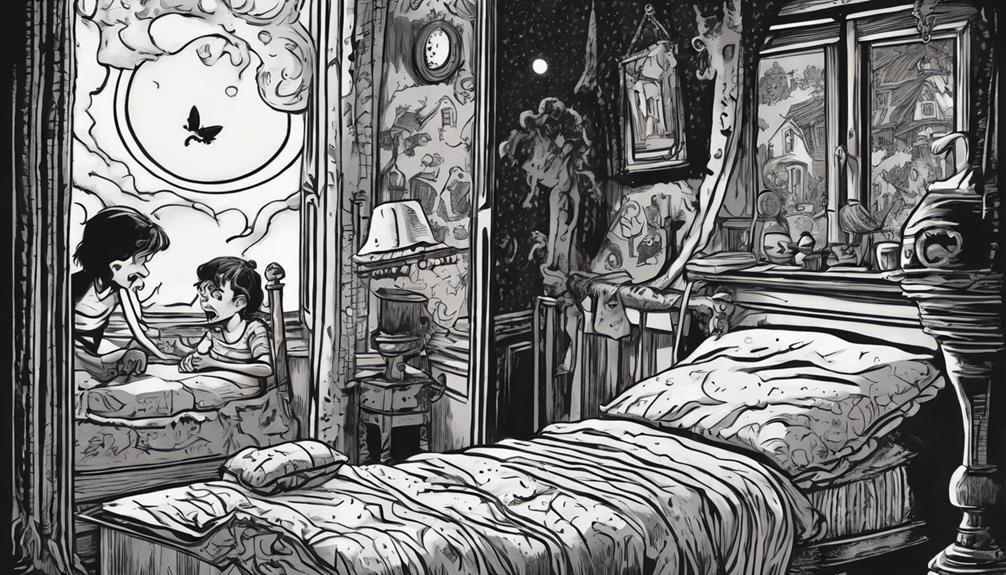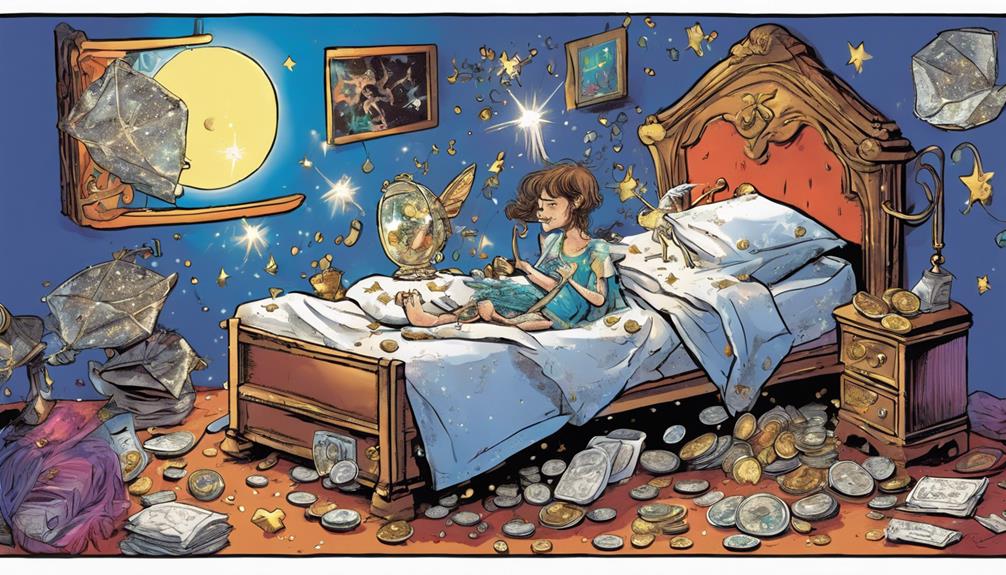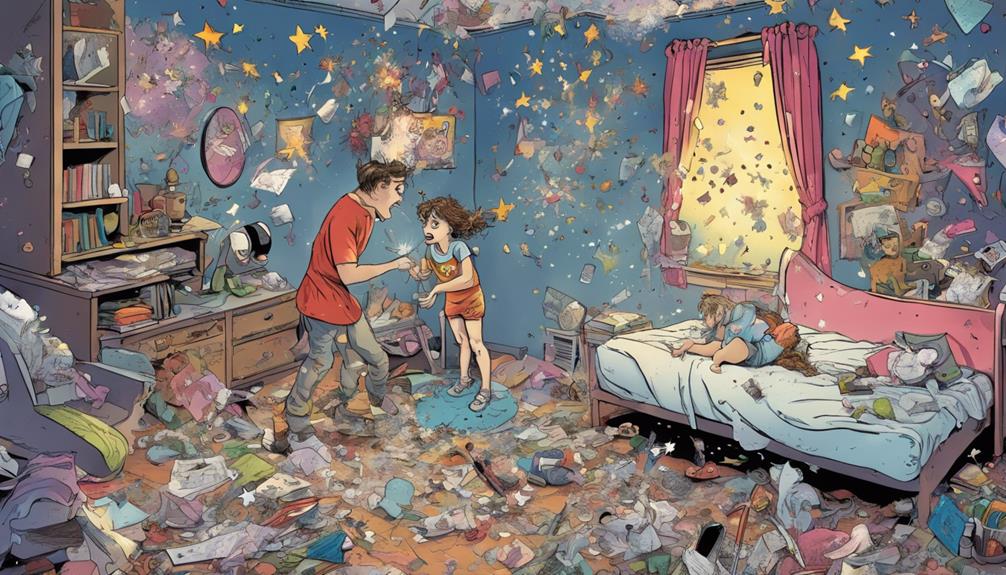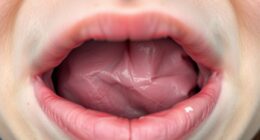You might be surprised to learn that the Tooth Fairy has deep historical roots and cultural variations that differ around the globe. While she may not be a physical entity, the idea of the Tooth Fairy symbolizes childhood changes and helps kids cope with losing their baby teeth. Ancient practices, like burying teeth for good fortune, have evolved into the modern tradition of leaving teeth under pillows for rewards. This enchanting narrative fosters creativity and bonding for families. Curious about how this charming figure has evolved and what it means for today's children? There's much more to uncover.
Key Takeaways
- The Tooth Fairy is a mythical figure rooted in various cultural traditions, symbolizing childhood milestones and the transition from baby teeth to adulthood.
- Different cultures, such as the Spanish Ratoncito Pérez, have unique customs surrounding lost teeth, showcasing diverse beliefs rather than a singular "real" entity.
- Modern practices involve children leaving teeth under pillows and receiving coins or small gifts, reinforcing the magical aspect of the tradition.
- The Tooth Fairy encourages imaginative play in children, helping them cope with the discomfort of losing teeth and fostering creativity.
The Origin of the Tooth Fairy

The Tooth Fairy has roots in various cultures, evolving from ancient traditions surrounding lost teeth. When you think about how kids lose their teeth, you mightn't realize that different societies had unique rituals for dealing with them.
For instance, in Norse culture, parents would bury a child's lost tooth to guarantee good fortune in battle. This act symbolized a rite of passage and the belief that teeth carried power.
In other cultures, like the Spanish-speaking world, children often toss their lost teeth under their pillows for a mouse named 'Ratoncito Pérez' to collect. This little mouse leaves a coin in exchange, further emphasizing the idea of rewarding children for their lost teeth.
These traditions reflect a common theme: the shift from childhood to adulthood. By incorporating fantastical elements, these customs help children cope with the loss of their baby teeth.
Historical Evidence Uncovered

When you explore the historical evidence surrounding the Tooth Fairy, you'll uncover fascinating ancient traditions that shaped this figure. For example, in European folklore, children would leave their baby teeth under their pillows for a mouse or rat to collect in exchange for money or other small gifts. This tradition eventually evolved into the Tooth Fairy figure that we know today. New research on tooth fairy traditions around the world continues to shed light on the origins and cultural significance of this beloved childhood myth. Exciting discoveries are being made about how different cultures have embraced and adapted the tooth fairy tradition over time.
You'll notice cultural variations that highlight how different societies handle lost teeth.
Over time, these beliefs have evolved, revealing a rich tapestry of stories and practices that continue to influence how we think about the Tooth Fairy today. For many children, the Tooth Fairy represents a sense of wonder and magic. Each child’s magical tooth fairy encounter is a personal and special experience that often shapes their beliefs and memories for years to come. As the traditions surrounding the Tooth Fairy persist, they serve as a reminder of the enduring power of childhood imagination and the importance of embracing the enchanting stories that have been passed down through generations.
Ancient Traditions Explored
You might be surprised to learn that the Tooth Fairy's origins trace back to ancient traditions that celebrated the loss of baby teeth in various cultures. In many societies, losing a tooth was seen as a rite of passage, marking a child's growth and shift into adulthood.
For example, Norse traditions involved burying baby teeth to guarantee the child's strong teeth would grow in their place. In medieval Europe, parents would toss lost teeth into the fire, believing it would encourage the growth of new teeth. These practices highlight the significance placed on baby teeth, as they were often thought to hold mystical properties.
In some cultures, children were given small tokens or coins in exchange for their lost teeth, similar to today's Tooth Fairy. This exchange not only provided a sense of reward but also helped ease the anxiety around losing teeth.
These ancient customs reveal a deep-rooted belief in the importance of teeth and childhood shifts. As you explore these traditions, you'll see how they laid the groundwork for the modern-day Tooth Fairy, blending folklore with the joy and wonder of growing up.
Cultural Variations Identified
Exploring ancient traditions reveals that various cultures have unique ways to celebrate the loss of baby teeth, each with its own beliefs and customs surrounding this milestone. For instance, in Spain and Latin America, children toss their lost teeth onto the roof, believing it brings good luck. Meanwhile, in some Asian cultures, parents encourage their children to bury their teeth in the ground, symbolizing strength and growth.
Here are a few fascinating cultural variations you might find intriguing:
- Mice and Rats: In parts of Europe, children place their teeth under their pillows for a mouse or rat to exchange it for money or a small gift.
- Tooth Fairy's Rival: In Turkey, a fairy named 'Tooth Mouse' is believed to take the tooth and leave a small present in return.
- Special Ceremonies: In India, some families host elaborate ceremonies to commemorate losing a first tooth, celebrating the child's growth.
These customs highlight the rich tapestry of beliefs surrounding this universal childhood experience.
Evolution of Beliefs
Historical evidence shows that beliefs surrounding the exchange of lost teeth have evolved considerably over centuries, reflecting changing cultural values and childhood experiences.
In ancient times, various cultures had unique rituals for disposing of lost teeth. For instance, Norse children would bury their teeth to guarantee good luck in battle, while some Spanish traditions involved throwing teeth onto the roof for good fortune.
As societies progressed, the idea of the Tooth Fairy emerged, particularly in Western cultures. This figure became a comforting symbol for children, easing the anxiety of losing teeth. You might notice that the Tooth Fairy's role has shifted from merely a giver of coins to a more magical entity, often accompanied by elaborate stories and traditions.
Today, some families integrate technology, using apps to track tooth loss or sending digital thank-you notes to the Tooth Fairy. This adaptation signifies how you and your peers are steering through modern childhood while keeping traditions alive.
Cultural Variations Around the World
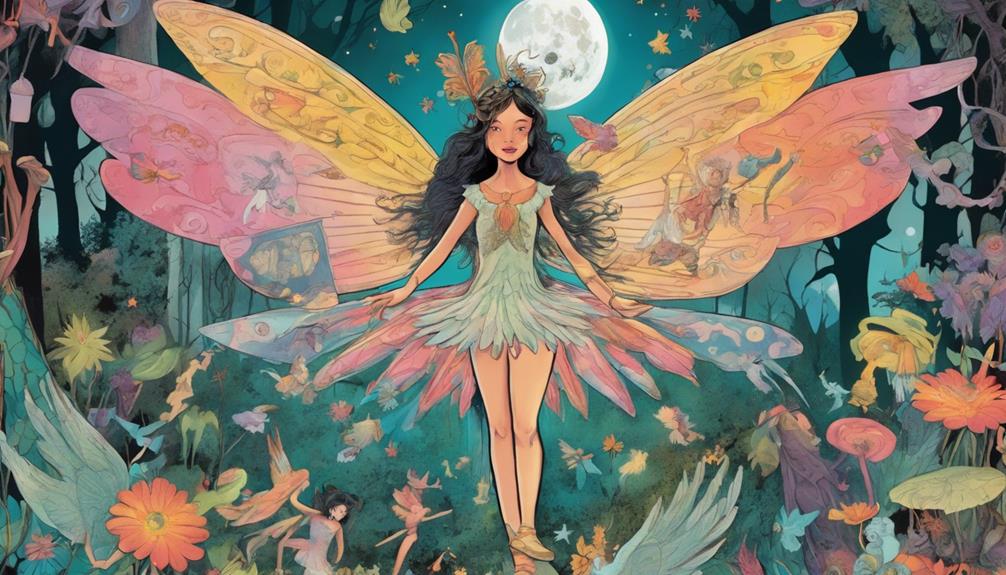
When you think about tooth traditions around the world, you'll find some fascinating variations.
Instead of the Tooth Fairy, different cultures have their own mythical creatures and rituals to celebrate lost teeth.
Let's explore how these customs reflect unique beliefs and practices across the globe.
Global Tooth Traditions
Across the globe, various cultures celebrate the loss of baby teeth with unique traditions that reflect their values and beliefs. When your child loses a tooth, you might find it fascinating to explore how different societies mark this milestone. Here are some intriguing ways cultures around the world celebrate this event:
- Spain: In Spain, children often wait for 'Ratoncito Pérez,' a little mouse who sneaks in to collect the lost tooth and leave a small gift in return.
- Mexico: Similar to Spain, children in Mexico also have a mouse named 'El Ratón de los Dientes' who performs the same charming ritual.
- Japan: In Japan, kids might throw their lost teeth onto the roof or bury them in the ground, depending on whether the tooth is from the upper or lower jaw, hoping for strong new teeth to grow in.
These global traditions showcase the rich tapestry of beliefs surrounding childhood milestones, making the experience of losing a tooth even more special.
Mythical Creatures and Rituals
Many cultures celebrate the loss of teeth with enchanting mythical creatures and rituals, each adding a unique twist to this universal childhood experience.
In the United States, you might place your lost tooth under your pillow for the Tooth Fairy, who leaves a small gift in exchange. In contrast, in Spain and parts of Latin America, children often celebrate with Ratoncito Pérez, a little mouse that scurries in to collect teeth and leave a surprise.
Traveling to Turkey, you'll find a custom where children throw their lost teeth onto the roof, believing that this act will bring them good luck and strong teeth in the future. In the Philippines, kids bury their teeth in the ground to guarantee that their adult teeth will grow in strong and healthy.
Each of these rituals not only marks a significant milestone in childhood but also reflects the cultural values surrounding growth and change.
Whether it's a fairy, a mouse, or a simple act of burying a tooth, these practices create lasting memories and deepen connections to cultural heritage.
Modern-Day Tooth Fairy Practices
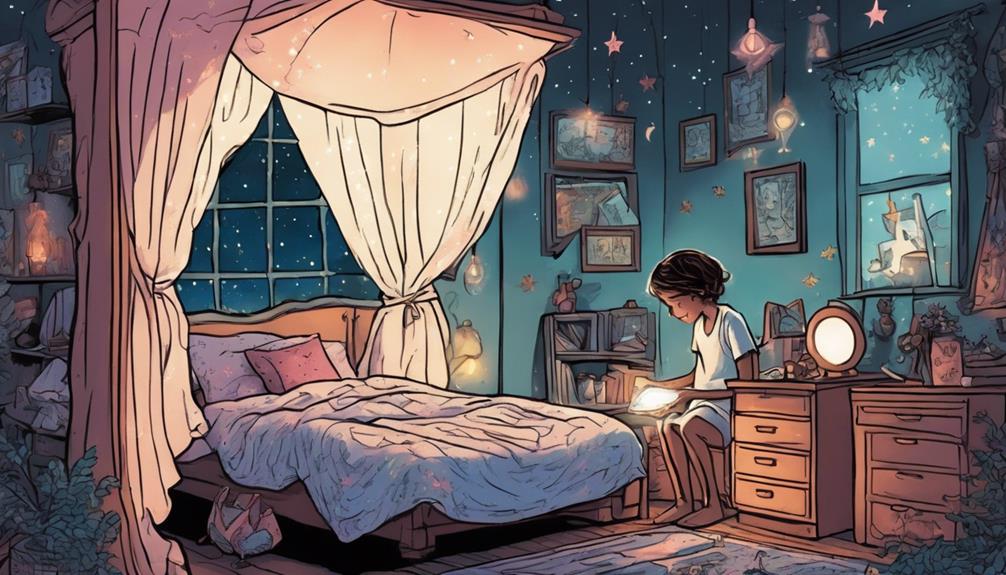
In today's world, kids often leave their lost teeth under pillows, enthusiastically anticipating a surprise from the Tooth Fairy, who typically rewards them with coins or small gifts. This practice has evolved over time, and parents often add their own unique twists to keep the magic alive.
Here are some popular modern-day Tooth Fairy practices you might consider:
- Personalized Notes: Many parents write a little note from the Tooth Fairy, thanking their child for the tooth, making it feel more special.
- Themed Rewards: Instead of just coins, you might leave themed toys or stickers that reflect your child's current interests.
- Tooth Fairy Certificates: Some families create certificates or keepsakes to commemorate the lost tooth, adding a special touch.
These practices not only make losing a tooth more exciting but also help to create cherished memories for both kids and parents.
After all, the magic of the Tooth Fairy continues to evolve, keeping the tradition alive and well!
Anecdotes From Parents and Children

Parents and children share delightful stories about their encounters with the Tooth Fairy, each one adding a unique twist to the age-old tradition. You might recall the excitement in your child's eyes as they placed their lost tooth under the pillow, all the while imagining what the Tooth Fairy would look like.
Some kids leave notes for the Tooth Fairy, asking questions or making special requests. One parent shared how their child wrote, “Dear Tooth Fairy, can you leave a unicorn instead of money?”
Others recount tales of the Tooth Fairy's creativity. One mom told how she sprinkled glitter around her child's room to mimic fairy dust, making the experience even more magical. Children often wake up to find not just coins but small treasures, like stickers or tiny toys, making each visit memorable.
Then there are those fun mishaps—like the dad who forgot to make the exchange and hurriedly left a dollar bill in the morning, claiming the Tooth Fairy had a busy night.
These anecdotes highlight how the Tooth Fairy tradition evolves within families, creating cherished memories that last a lifetime.
Psychological Impact on Children

The belief in the Tooth Fairy can spark a child's imagination and foster a sense of wonder, helping them navigate the change of losing teeth with a mix of excitement and joy. This magical figure can provide comfort during a time that might otherwise feel unsettling.
When kids put their lost teeth under the pillow, they're not just waiting for a reward; they're engaging in a cherished ritual that helps them process growing up.
The psychological impact of this belief can be significant:
- Encouragement of Imagination: Kids learn to create stories and think beyond reality.
- Coping Mechanism: It helps children deal with the discomfort and fear of losing teeth.
- Sense of Reward: The Tooth Fairy's visit reinforces the idea that change can bring positive outcomes.
The Tooth Fairy in Popular Culture

From movies to bedtime stories, the Tooth Fairy has become a beloved figure that captures the imagination of children and adults alike. This enchanting character symbolizes the shift from childhood to maturity, often sparking excitement during tooth loss. You might have encountered her in various forms, from whimsical animations to heartfelt literature.
Here's a glimpse into the impact of the Tooth Fairy across different mediums:
| Medium | Notable Example | Emotional Impact |
|---|---|---|
| Film | *The Tooth Fairy* | Laughs and family bonding |
| Literature | *The Tooth Fairy Wars* | Adventure and friendship |
| Television | *Tooth Fairy* episodes | Fun and relatable experiences |
| Music | *Tooth Fairy Lullabies* | Comfort and soothing melodies |
Each representation adds depth to her character, making her a staple in childhood experiences. Whether she's a mischievous sprite or a caring guardian, the Tooth Fairy weaves magic into the everyday rituals of losing teeth. This enduring figure not only entertains but also fosters imagination, making her a cherished part of growing up.
Debunking Common Myths

Many people believe in the Tooth Fairy's magical powers, but several common myths surround her existence that deserve to be clarified. You might think the Tooth Fairy collects teeth from every child, but in reality, she's more of a cultural symbol than a literal figure.
Here are some myths that need debunking:
- The Tooth Fairy is universal: While many cultures have similar traditions, not everyone believes in the Tooth Fairy. Some have different rituals.
- You'll always get money for your teeth: The amount varies widely; some kids receive coins, while others might find small toys or notes instead.
- The Tooth Fairy only visits children: Some parents tell stories about the Tooth Fairy visiting adults who lose teeth, which isn't a common practice.
Understanding these myths helps you see the Tooth Fairy for what she is—a fun tradition rather than a definitive reality. So, the next time you hear a story about her, you'll know what's true and what's just part of the legend.
What This Means for You

Understanding the myths surrounding the Tooth Fairy can help you navigate the tradition with a more informed perspective. By separating fact from fiction, you can create a more meaningful experience for your child. For instance, instead of just focusing on the monetary reward, consider discussing the importance of dental health and the excitement of growing up.
You can also use this opportunity to foster your child's imagination. Engage them in storytelling about the Tooth Fairy's adventures and encourage them to come up with their own tales. This way, the tradition becomes not just about losing a tooth, but about celebrating milestones in a fun and creative manner.
Additionally, knowing the cultural variations of the Tooth Fairy can enrich your family's experience. Different cultures have unique traditions surrounding lost teeth, and exploring these can provide valuable lessons about diversity.
Frequently Asked Questions
How Much Money Should Parents Leave for the Tooth Fairy?
Deciding how much money to leave for the Tooth Fairy can depend on your family's traditions. Typically, parents leave between one to five dollars, but you should choose an amount that feels right for you.
What Do Children Believe Happens to Their Lost Teeth?
When children lose their teeth, they often believe magical creatures collect them, transforming them into money or gifts. This whimsical idea sparks excitement, making the experience of losing a tooth feel special and memorable.
Are There Any Tooth Fairy-Themed Products Available?
You'll find plenty of tooth fairy-themed products available, including decorative pillows, charming boxes, and adorable plush toys. These items can make losing teeth a magical experience for your child, adding excitement to the tradition.
How Do Different Religions View the Tooth Fairy Tradition?
Imagine children dreaming of magic while clutching their lost teeth. Different religions view the Tooth Fairy differently: some embrace the tradition as whimsical, while others see it as conflicting with their beliefs about spirits and rituals.
Can the Tooth Fairy Be Used to Teach Children About Money?
You can definitely use the Tooth Fairy to teach kids about money. By exchanging lost teeth for cash, you're introducing the concept of saving and valuing possessions, making financial lessons fun and engaging for young minds.
Can the New Evidence About the Tooth Fairy’s Existence Be Linked to Her Watching People?
There has been much speculation about why the tooth fairy watching people. Some believe that she is simply monitoring the behavior of children while others think she may be gathering information for her own purposes. The new evidence about her existence has sparked a renewed interest in understanding her motives.
Is There Any Truth to the Tooth Fairy’s Dangerous Side Effects?
Many parents worry about the potential tooth fairy side effects warning. Stories of children experiencing allergic reactions to fairy dust and possible sleep disturbances have caused concern. While these claims may be unverified, it’s important for parents to be cautious and monitor their children’s reactions to the tooth fairy’s visit.
Conclusion
You might think the Tooth Fairy is just a fun myth, but the magic behind it fosters joy and creativity in children.
Sure, some argue it encourages dishonesty, but consider how it sparks imagination and excitement during a milestone.
Embracing the Tooth Fairy tradition can create cherished memories and strengthen the bond between you and your child.
So, why not keep the spirit alive? After all, a little magic can go a long way in childhood.

